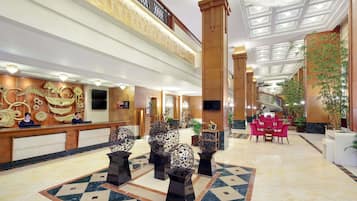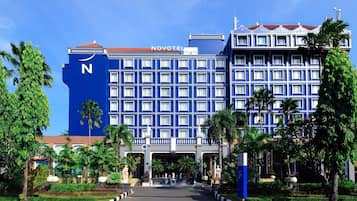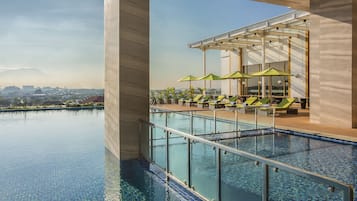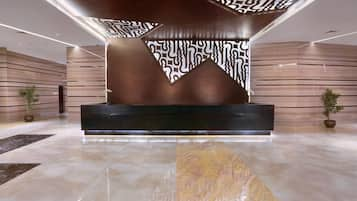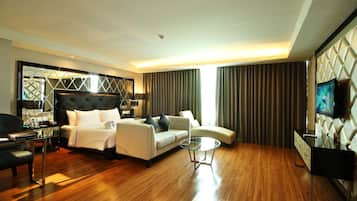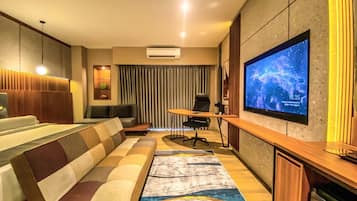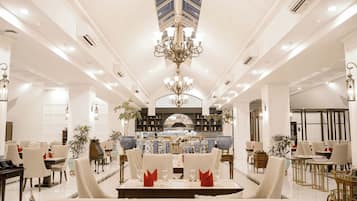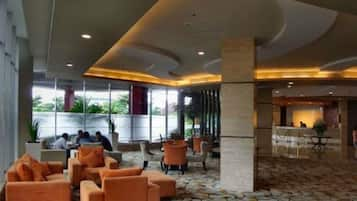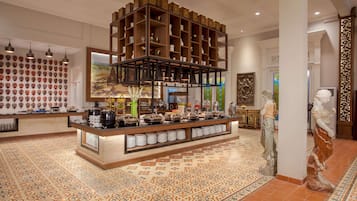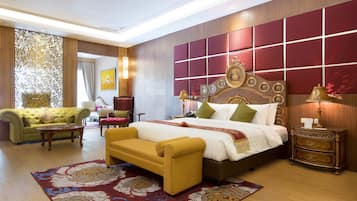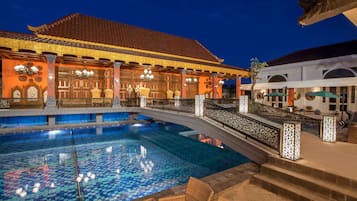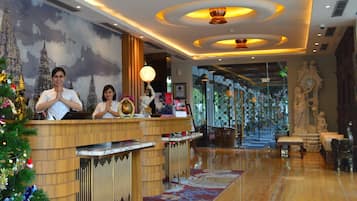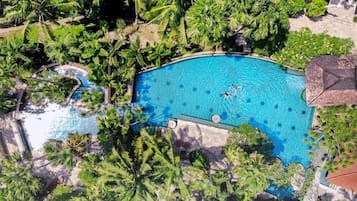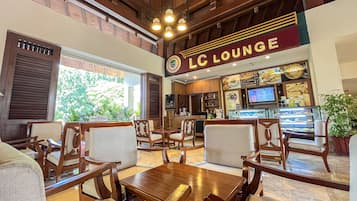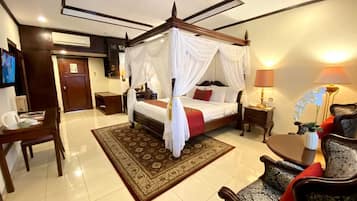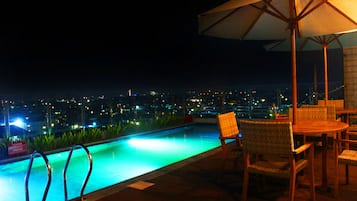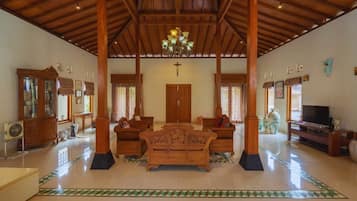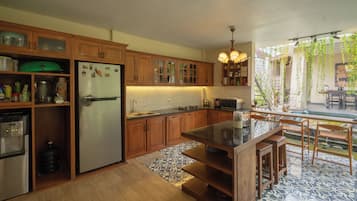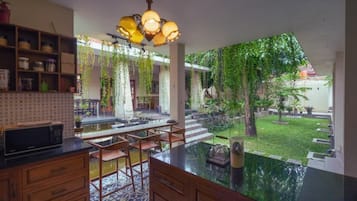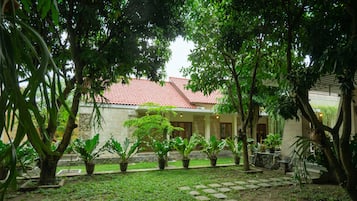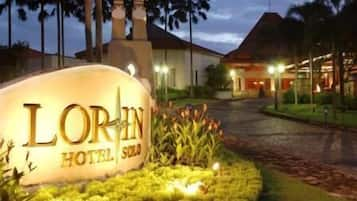Photo by Sharrie Shaw
Compare and book 4 Star hotels in Surakarta, Central Java
- Change your mindBook hotels with free cancellation
- Be pickySearch almost a million properties worldwide
Check availability on Surakarta 4 Star Hotels
Top Surakarta 4 Star Hotels

Novotel Solo
Solo City Centre
8.2 out of 10, Very good, (113)
The price is 941.412 ₫
1.139.108 ₫ total
includes taxes & fees
5 Dec - 6 Dec

Swiss-Belhotel Solo
Banjarsari
9.2 out of 10, Wonderful, (38)
The price is 1.119.259 ₫
1.354.304 ₫ total
includes taxes & fees
23 Nov - 24 Nov
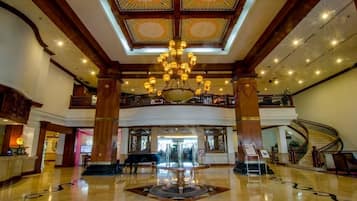
The Sunan Hotel Solo
Surakarta
7.4 out of 10, Good, (6)
The price is 669.499 ₫
810.094 ₫ total
includes taxes & fees
3 Dec - 4 Dec

The Alana Hotel and Convention Center - Solo by Aston
Colomadu
8.2 out of 10, Very good, (61)

Amaranta Prambanan Yogyakarta
Prambanan
10.0 out of 10, Exceptional, (1)
The price is 1.960.785 ₫
2.372.551 ₫ total
includes taxes & fees
27 Nov - 28 Nov
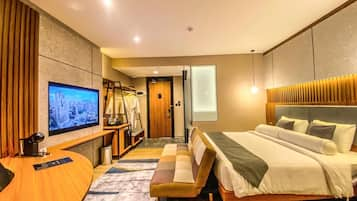
Nata Azana Hotel Solo
Surakarta
9.6 out of 10, Exceptional, (7)
The price is 768.024 ₫
929.308 ₫ total
includes taxes & fees
23 Nov - 24 Nov
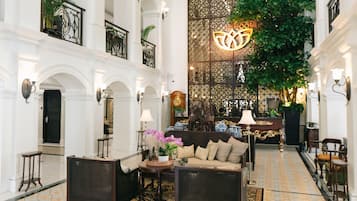
Mahalaya The Legacy Solo
Solo City Centre
6.0 out of 10, (2)
The price is 1.054.185 ₫
1.275.565 ₫ total
includes taxes & fees
21 Nov - 22 Nov

Solo Paragon Hotel & Residences
Solo City Centre
8.2 out of 10, Very good, (79)
Save an average of 15% on thousands of hotels when you're signed in
Explore similar 5-star hotels
Many 5-star hotels have the same amenities as 4-star hotels. See all 5-star hotels in Surakarta.

Alila Solo, Java
Jl. Slamet Riyadi No. 562 Surakarta Central Java
The price is 1.462.669 ₫ per night from 30 Nov to 1 Dec
1.462.669 ₫
1.769.830 ₫ total
30 Nov - 1 Dec
includes taxes & fees
9.2/10 Wonderful! (132 reviews)
Still don't see what you're looking for?
See all properties in Surakarta.
You can also use these popular filters to refine your search.
Lowest nightly price found within the past 24 hours based on a 1 night stay for 2 adults. Prices and availability subject to change. Additional terms may apply.
Surakarta and related destinations
The royal Keraton Surakarta palace showcases Javanese heritage with traditional dance performances and ornate artefacts from the sultanate era. Explore Pasar Gede market for local batik textiles, then visit nearby Sangiran to see ancient human fossils in the UNESCO-listed museum.
![At the museum no photos are allowed which is really unfortunate as it was well worth the visit and the guided tour is definitely not to be missed. In the museum there are even Batik made from the Dutch era which depicts stories like Little Red Riding Hood and Snow White!
I enjoyed the tour v much and at the end of the tour we were brought to this room where the artisan were working on hand drawn batik.
Below is an excerpt from Wikipedia for anyone interested in learning more about the process of batik making.
Firstly, a cloth is washed, soaked and beaten with a large mallet. Patterns are drawn with pencil and later redrawn using hot wax, usually made from a mixture of paraffin or bees wax, sometimes mixed with plant resins, which functions as a dye-resist. The wax can be applied with a variety of tools. A pen-like instrument called a canting (IPA: [tʃantiŋ], sometimes spelled with old Dutch orthography tjanting) is the most common. A canting is made from a small copper reservoir with a spout on a wooden handle. The reservoir holds the resist which flows through the spout, creating dots and lines as it moves. For larger patterns, a stiff brush may be used. Alternatively, a copper block stamp called a cap (IPA: [tʃap]; old spelling tjap) is used to cover large areas more efficiently.
After the cloth is dry, the resist is removed by scraping or boiling the cloth. The areas treated with resist keep their original color; when the resist is removed the contrast between the dyed and undyed areas forms the pattern. This process is repeated as many times as the number of colors desired.
The most traditional type of batik, called batik tulis (written batik), is drawn using only the canting. The cloth need to be drawn on both sides and dipped in a dye bath three to four times. The whole process may take up to a year; it yields considerably finer patterns than stamped batik.
Source: Wikipedia](https://images.trvl-media.com/place/6224808/26fd1460-c65a-4c1a-9444-7a893e883ac9.jpg?impolicy=fcrop&w=300&h=400&p=1&q=high)
Photo by Sharrie Shaw
Open Photo by Sharrie Shaw
Top Surakarta Hotel Reviews
Explore a world of travel with Expedia
Hotels in Surakarta by Star Rating
Areas of Surakarta
Accommodation near Surakarta attractions
- Hotels near Mangkunegaran Palace
- Hotels near The Heritage Palace
- Hotels near Kraton Surakarta
- Hotels near Solo Square
- Hotels near Gede Market
- Hotels near Balekambang City Park
- Hotels near Radya Museum Library
- Hotels near Pasar Klewer
- Hotels near Mesjid Agung
- Hotels near De' Tjolomadoe
- Hotels near Bengawan Solo
- Hotels near Sangiran Early Man Site
- Hotels near Hartono Mall
Choose Your Surakarta Hotel Style
- Business Hotels in Surakarta
- Family-Friendly Hotels in Surakarta
- Golf Hotels in Surakarta
- Green Hotels in Surakarta
- Historic Hotels in Surakarta
- Hotels with Air Conditioning in Surakarta
- Hotels with Airport Transfers in Surakarta
- Hotels with Babysitting Services in Surakarta
- Hotels with Breakfast in Surakarta
- Hotels with Entertainment in Surakarta
- Hotels with Gym in Surakarta
- Hotels with Hot Tubs in Surakarta
- Hotels with Laundry Service in Surakarta
- Hotels with Parking in Surakarta
- Hotels with Restaurant in Surakarta
- Hotels with smoking rooms in Surakarta
- Romantic Hotels in Surakarta
- Shopping Hotels in Surakarta
- Spa Hotels in Surakarta
- Sports Hotels in Surakarta
- Wedding Hotels in Surakarta
![At the museum no photos are allowed which is really unfortunate as it was well worth the visit and the guided tour is definitely not to be missed. In the museum there are even Batik made from the Dutch era which depicts stories like Little Red Riding Hood and Snow White!
I enjoyed the tour v much and at the end of the tour we were brought to this room where the artisan were working on hand drawn batik.
Below is an excerpt from Wikipedia for anyone interested in learning more about the process of batik making.
Firstly, a cloth is washed, soaked and beaten with a large mallet. Patterns are drawn with pencil and later redrawn using hot wax, usually made from a mixture of paraffin or bees wax, sometimes mixed with plant resins, which functions as a dye-resist. The wax can be applied with a variety of tools. A pen-like instrument called a canting (IPA: [tʃantiŋ], sometimes spelled with old Dutch orthography tjanting) is the most common. A canting is made from a small copper reservoir with a spout on a wooden handle. The reservoir holds the resist which flows through the spout, creating dots and lines as it moves. For larger patterns, a stiff brush may be used. Alternatively, a copper block stamp called a cap (IPA: [tʃap]; old spelling tjap) is used to cover large areas more efficiently.
After the cloth is dry, the resist is removed by scraping or boiling the cloth. The areas treated with resist keep their original color; when the resist is removed the contrast between the dyed and undyed areas forms the pattern. This process is repeated as many times as the number of colors desired.
The most traditional type of batik, called batik tulis (written batik), is drawn using only the canting. The cloth need to be drawn on both sides and dipped in a dye bath three to four times. The whole process may take up to a year; it yields considerably finer patterns than stamped batik.
Source: Wikipedia](https://images.trvl-media.com/place/6224808/26fd1460-c65a-4c1a-9444-7a893e883ac9.jpg?impolicy=fcrop&w=1200&h=500&q=medium)
